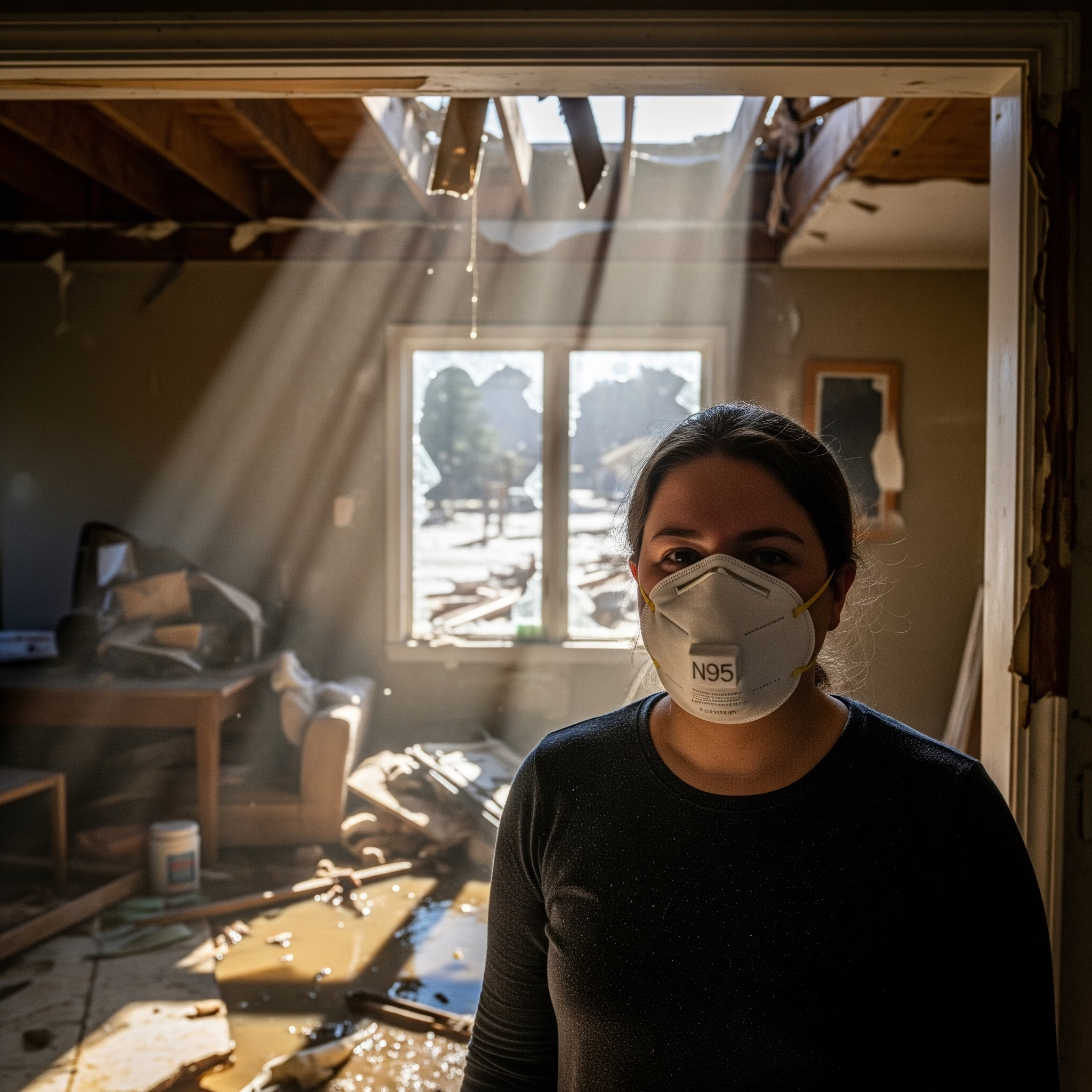When floodwaters finally recede and you’re staring at the soggy remnants of your home, breathing problems might be the last thing on your mind.
You’re probably thinking about insurance claims, damaged furniture, and where you’ll sleep tonight. But here’s the thing—your lungs are already facing a battle you can’t see, and it’s just getting started.
The Invisible Enemy in Your Air
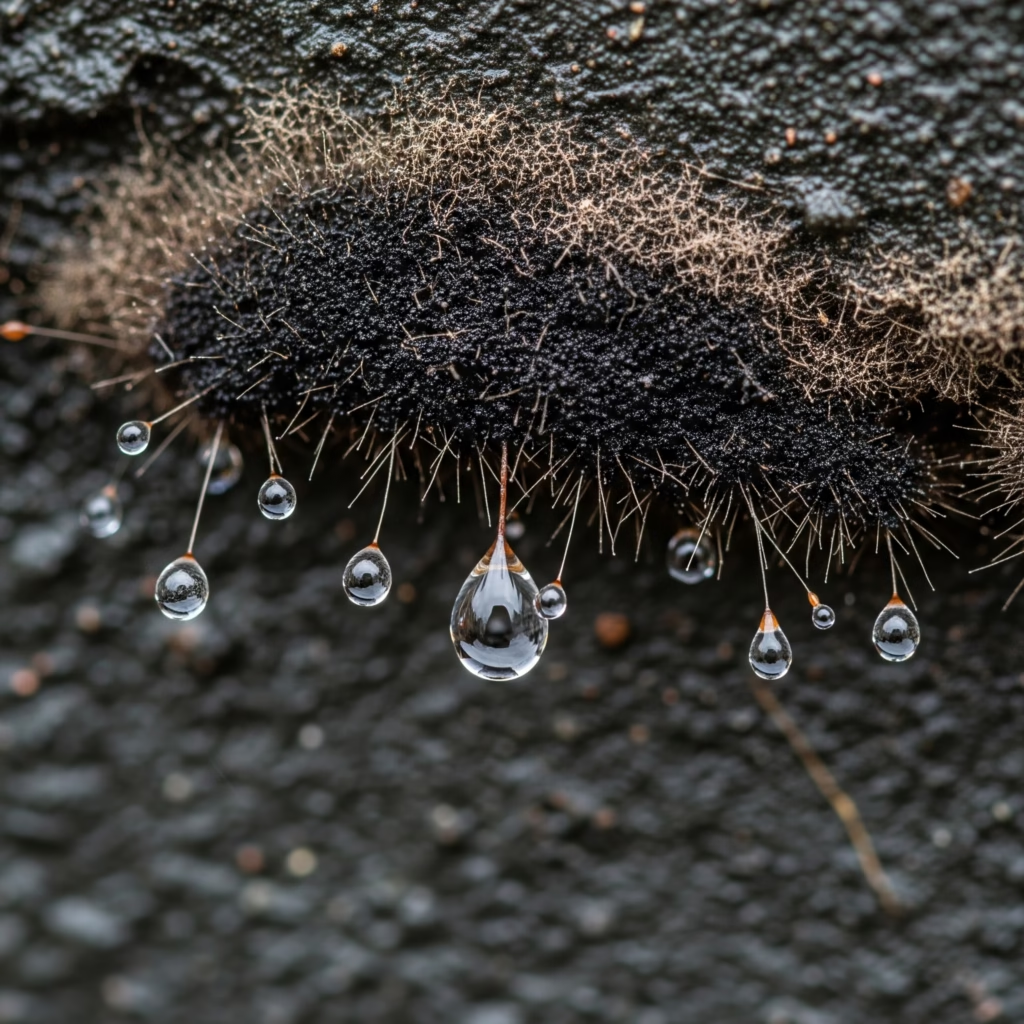
Let’s talk about what’s really happening in that damp, musty air you’re breathing. Flooding doesn’t just damage your stuff; it turns your home into a breeding ground for respiratory hazards that can affect your health for months to come.
You know what’s particularly sneaky about post-flood respiratory risks? They don’t announce themselves with sirens or warning signs.
Instead, they creep in through contaminated dust particles, mold spores floating invisibly through the air, and bacteria hitchhiking on every surface the floodwater touched.
When flood water mixes with sewage systems—and let’s be honest, it almost always does—you’re dealing with a cocktail of bacteria, viruses, and parasites that can cause serious respiratory infections.
Those cleaning operations that seem so necessary? They’re actually one of the biggest risk factors for developing acute respiratory infections. It’s like your good intentions are working against you.
Mold: The Persistent Troublemaker
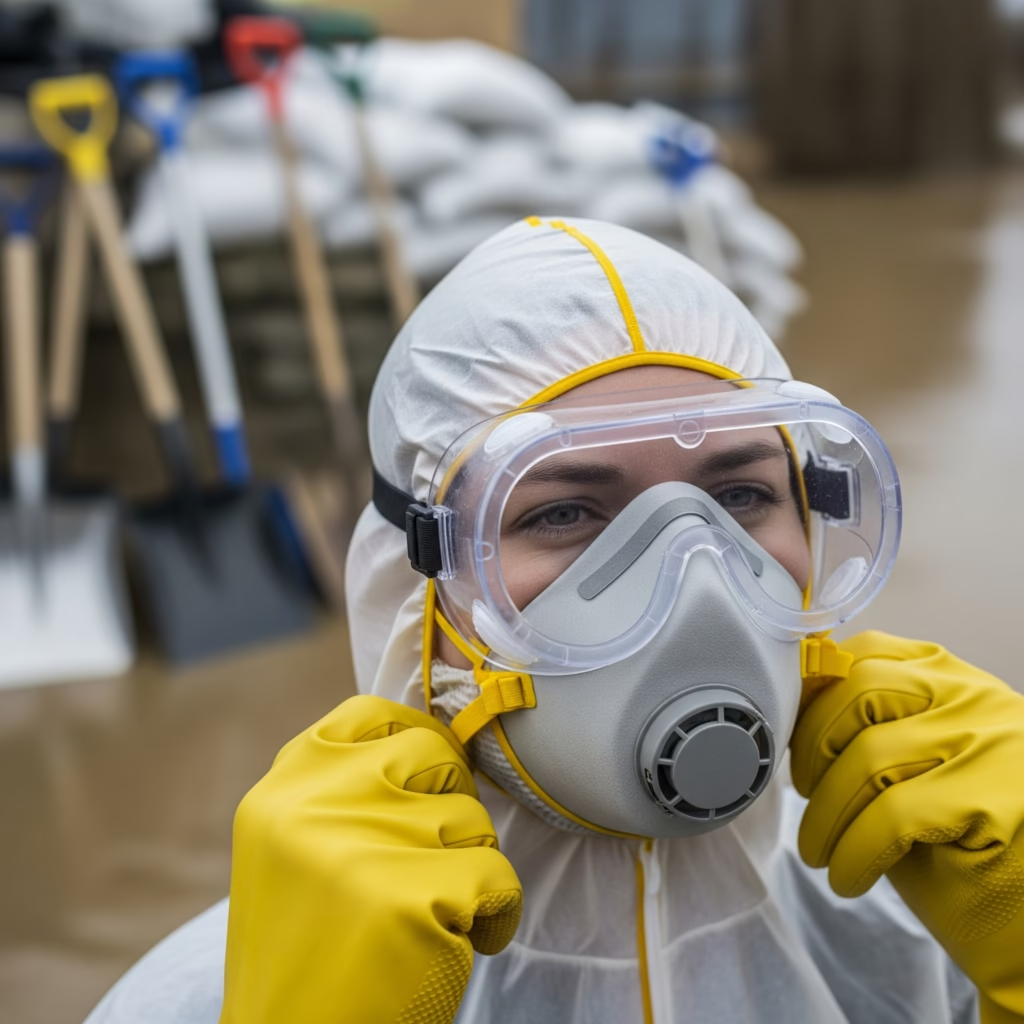
Here’s where things get really concerning. Mold doesn’t wait around—it starts growing within 24 to 48 hours of water exposure. While you’re still figuring out your next move, microscopic spores are already setting up shop in your walls, furniture, and anywhere moisture can hide.
Professor Sheryl Van Nunen from the National Asthma Council Australia puts it perfectly: “When mould is present, small particles called spores are released in the air, which can trigger asthma and allergy symptoms”.
These aren’t just minor inconveniences we’re talking about. We’re looking at coughing, wheezing, shortness of breath, and for people with existing conditions like asthma or COPD, potentially life-threatening flare-ups.
The tricky part? Mold grows in places you’d never think to look. Sure, you can see the obvious patches on walls, but it’s also thriving inside your books, toys, clothes, and even within the structure of your home.
You could clean every visible speck and still have a mold problem brewing behind the scenes.
Who’s Really at Risk Here?
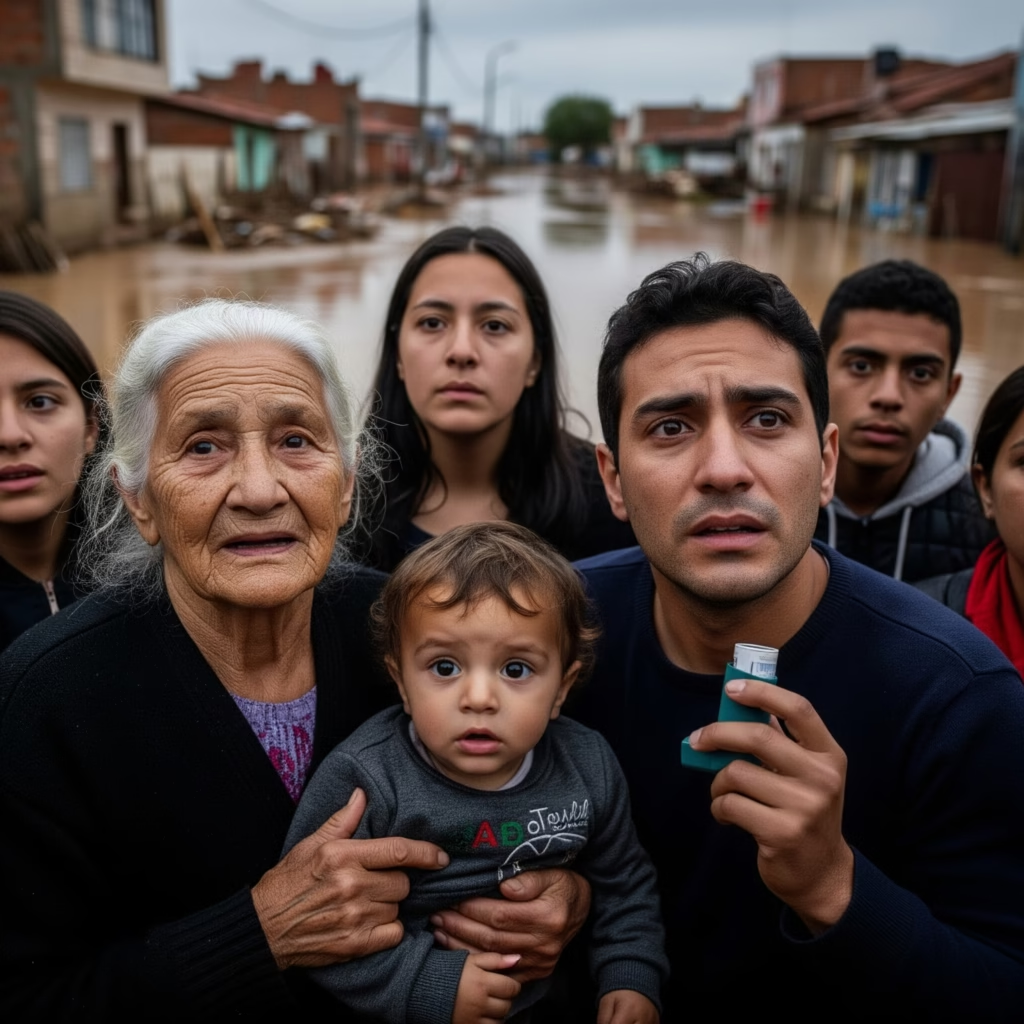
Now, you might be thinking, “I’m healthy—I can handle a little mold exposure.” And maybe you can. But honestly, post-flood respiratory risks don’t discriminate fairly.
Children and elderly people face the highest risks, along with anyone with compromised immune systems.
If you’re dealing with asthma, COPD, or you’re undergoing treatments like chemotherapy, exposure to post-flood contaminants can trigger severe reactions that land you in the hospital.
But here’s what caught my attention in the research: even healthy adults working in flood cleanup operations show significantly higher rates of acute respiratory infections1. It’s not just about pre-existing conditions—it’s about exposure levels and duration.
Your Defense Strategy
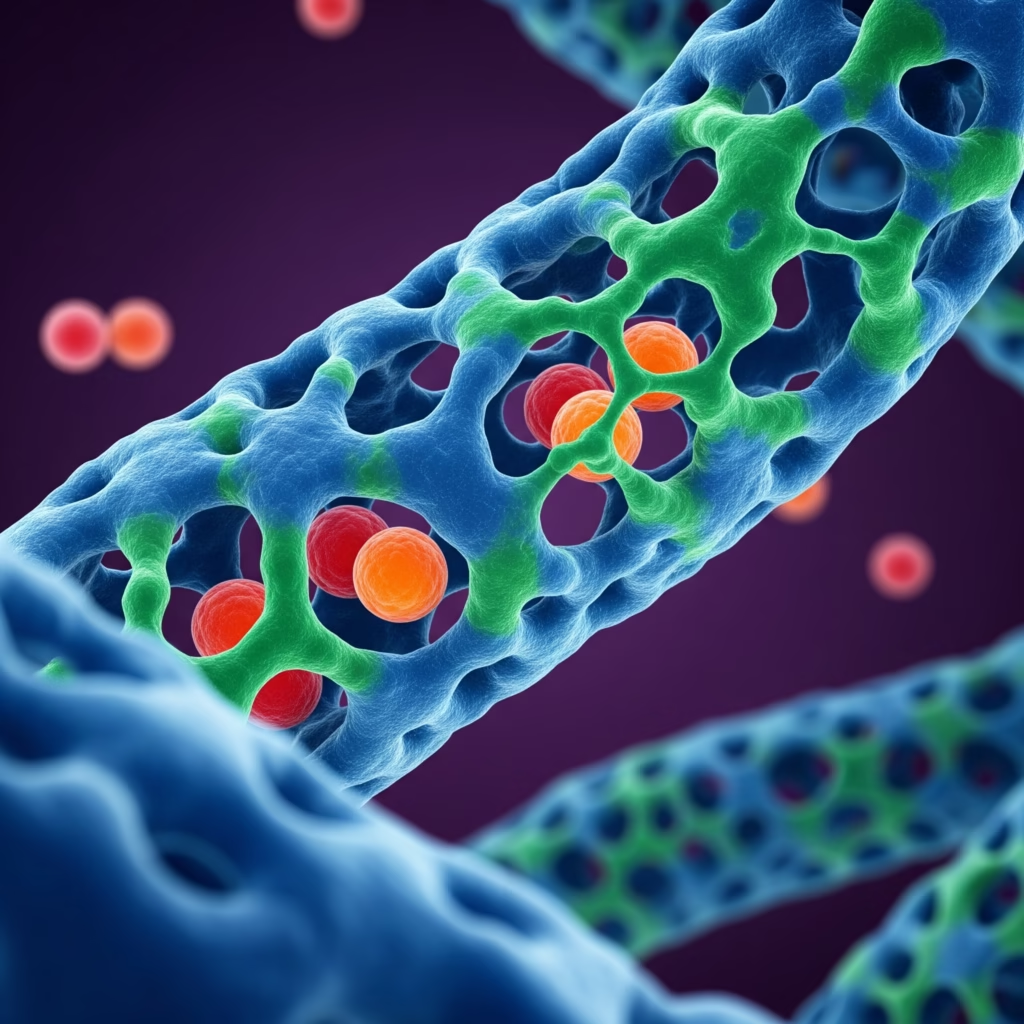
Let me be straight with you—protecting your respiratory health after flooding requires more than just “toughing it out.” You need a game plan that actually works.
First things first: timing is everything.
The CDC recommends assuming you have mold growth if you couldn’t dry everything within 24-48 hours of flooding . Don’t wait to see visible signs; act like it’s already there.
When you’re ready to enter your home, gear up properly. We’re talking N95 respirators (not just any face mask), rubber gloves, protective clothing, and sturdy shoes.
The N95 mask specifically protects against dust and mold particles, but—and this is crucial—it only works if it fits properly and you’re wearing it correctly.
Here’s a pro tip that might save your health: don’t use fans if mold has already started growing. I know it seems counterintuitive when you’re trying to dry everything out, but fans can actually spread mold spores throughout your entire home.
Instead, use dehumidifiers and ensure proper ventilation once you’ve addressed the immediate mold problem.
The Cleanup Reality Check
You know what nobody tells you about post-flood cleanup? Sometimes the most heartbreaking decision is also the healthiest one. Anything that touches floodwater and can’t be completely cleaned and dried within 24-48 hours needs to go.
Yes, that includes your grandmother’s quilt, your favorite armchair, and those family photos.
When it comes to cleaning products, here’s where people often make dangerous mistakes. Never, ever mix bleach and ammonia—it creates toxic vapors that can seriously damage your lungs.
Also, bleach might remove visible mold, but it won’t kill the spores underneath, so don’t rely on it as your primary solution.
A safer approach? Use naturally fermented white vinegar solutions or specialized mold-reduction cleaners. And remember—painting or caulking over mold is like putting a Band-Aid on a broken bone.
Fix the moisture problem first, clean up all the mold, then worry about making things look pretty again.
When Professional Help Isn’t Optional
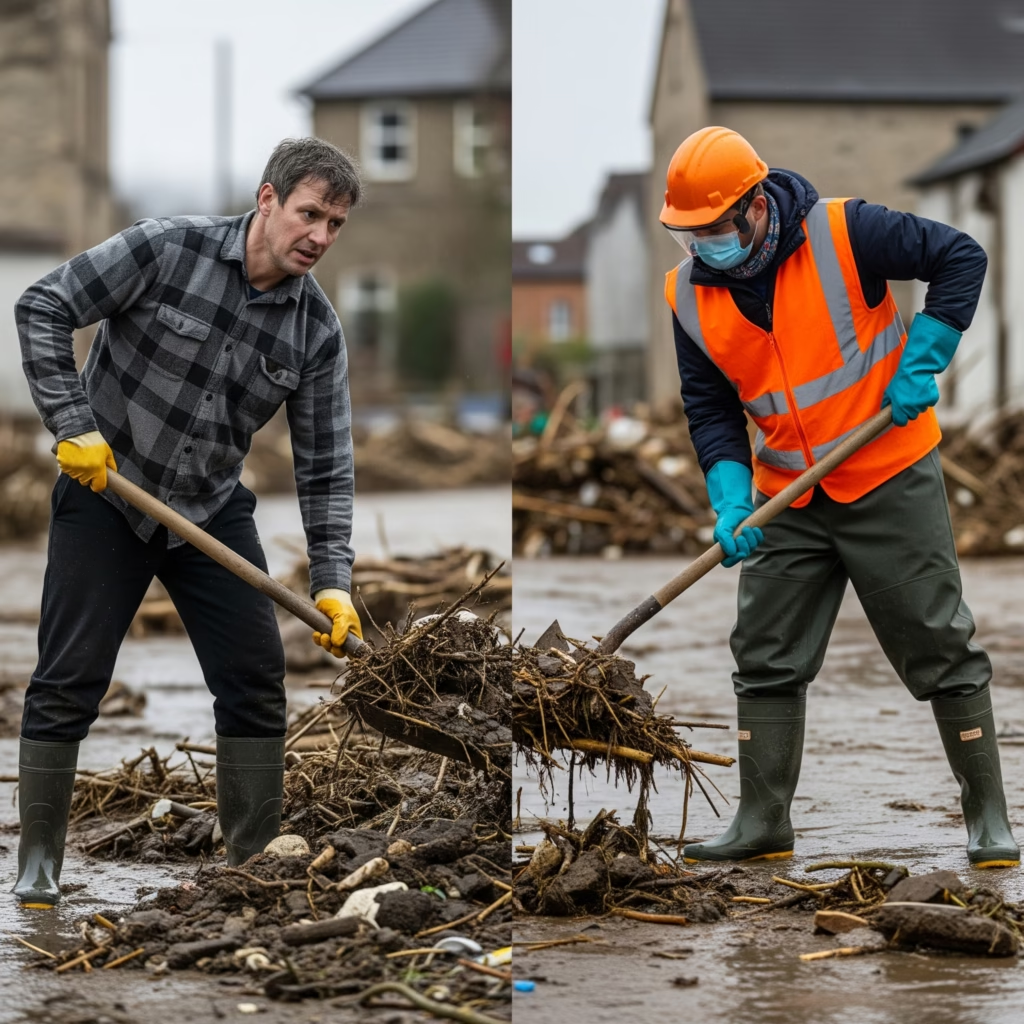
Sometimes DIY just doesn’t cut it. If you’re experiencing persistent coughing, wheezing, or breathing difficulties during cleanup, stop immediately and contact a healthcare provider.
Your lungs are sending you a message, and you need to listen.
Respiratory tract infections are among the most commonly reported health issues after flooding, partly due to overcrowding in shelters but also from direct exposure to contaminated materials.
In some regions, respiratory infections have accounted for over 17% of all post-flood diseases.
The bottom line? Your respiratory health isn’t something to gamble with. Yes, cleanup is expensive and exhausting, but lung damage can be permanent.
FEMA may provide funds for mold remediation if the damage prevents you from living safely in your home, so explore those options before you compromise your health trying to save money.
Post-flood recovery isn’t just about rebuilding structures—it’s about protecting the health that lets you enjoy whatever you rebuild. Your lungs have carried you this far; they deserve the same careful attention you’d give any other flood damage.





